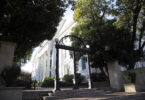Carla Schwan, professor and extension food safety specialist, and Tracey Brigman, professor and licensed dietitian in the College of Family and Consumer Sciences, spoke with Martha Stewart about reusing plastic sandwich and freezer bags.
According to Schwan, it’s generally safe to reuse a plastic bag if it has been properly washed first. However, whether the bag is safe to reuse ultimately depends on what was in the bag and the condition of the bag.
“The best items to keep in a resealable bag to ensure it remains safe for reuse are dry goods such as baked products, cookie dough, grains, or nuts (as long as it is not an allergy-triggering food),” Brigman said.
If a resealable plastic bag contained any of the big nine allergens, such as tree nuts, peanuts or sesame, it is not suitable for reuse as these foods may leave trace allergens and pose a risk of cross-contact, Schwan said.
The bag should be disposed of if it has any signs of mold or yeast growth or if it appears damaged, cloudy or dirty, Brigman added.
The number of times you can reuse a plastic bag depends on the material of the bag, how it is cleaned and what was previously stored in the bag.
“Different bags and materials may withstand more washes than others. It is always a good idea to inspect the bag for any signs of wear or damage after each use and discard if necessary,” Schwan said.
No matter what was stored inside the plastic bag, you must wash it before reusing.
“The best way to clean a resealable bag for reuse is to wash it with soap and water. Do not turn the bag inside out when washing, as that can result in stress or tears in the bag,” Brigman said.
When cleaning, be sure to scrub the seams thoroughly since food can get stuck in the seal. Rinse the bag well and wait until it is completely dry before reusing it.







